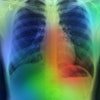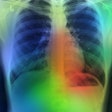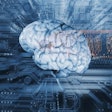Thursday, December 1 | 8:00 a.m.-9:00 a.m. | R1-SSBR10-1 | Room E451B
An artificial intelligence (AI) algorithm could decrease radiologist workload by providing automated triage of negative digital breast tomosynthesis (DBT) exams, according to this scientific presentation.Researchers from NYU Langone Health trained and assessed an AI system utilizing an ensemble of models based on both full-field digital mammography (FFDM) and DBT images. The algorithm was trained and tuned on a dataset of nearly 500,000 FFDM and/or DBT images.
An ensemble model that combined predictions from DBT, synthetic mammography, and FFDM produced an area under the curve of 0.917 in a test set of 19,684 exams for identifying cases with malignant lesions. And when triaging 30%, 40%, or 50% of women with the lowest AI scores into a workflow that didn’t require radiologist interpretation, the algorithm would have yielded a false-negative rate of 0%, 0%, and 0.016%, respectively, according to presenter Dr. Laura Heacock and colleagues.
They concluded that up to 40% of screening DBT studies could be removed from the radiologist workflow with a 0% false-negative rate and 29% lower recall rate.
“An AI system as a standalone DBT interpreter could eliminate low probability of malignancy cases from the radiologist worklist, resulting in fewer false positives/recalls,” the authors wrote in their abstract.
Get all of the details by sitting in on this Thursday morning session.




















